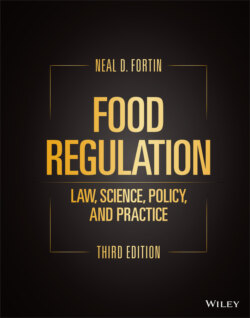Читать книгу Food Regulation - Neal D. Fortin - Страница 302
5.9.1 Marketing an Unapproved New Drug
ОглавлениеA product intended to diagnose, cure, mitigate, treat, or prevent a disease is a drug under the FD&C Act and must meet the regulatory requirements for drugs.70 The claims made on the product’s labeling are a primary means of establishing the intended use of a product, but FDA is not limited to the product’s packaging. Any evidence of the product’s intended use may be used by FDA to establish that a product is intended to diagnose, cure, mitigate, treat, or prevent a disease. Disease claims, consumer testimonials, citation to scientific or clinical research, and word of mouth can all provide evidence that a product is intended to diagnose, cure, mitigate, treat, or prevent disease.
Any product that is not generally recognized, among experts qualified by scientific training and expertise to evaluate the safety and effectiveness of drugs, as safe and effective for the intended use (GRASE) is considered a “new drug.”71 Marketing a new drug in the United States without an FDA‐approved new drug application (NDA) violates the FD&C Act.72
Regardless of the quantity and quality of science supporting a therapeutic claim, that claim violates the FD&C Act if the product and claim are not governed by an approved NDA. Truth of the claim is no defense. FDA generally gets considerable deference in this area because unapproved therapeutic claims not only create the potential for economic loss, but may also put consumers’ health at risk.73 When unapproved new drugs are promoted for diseases, FDA is reasonably concerned that consumers may forgo necessary medical diagnosis and treatment to the detriment of their health.
